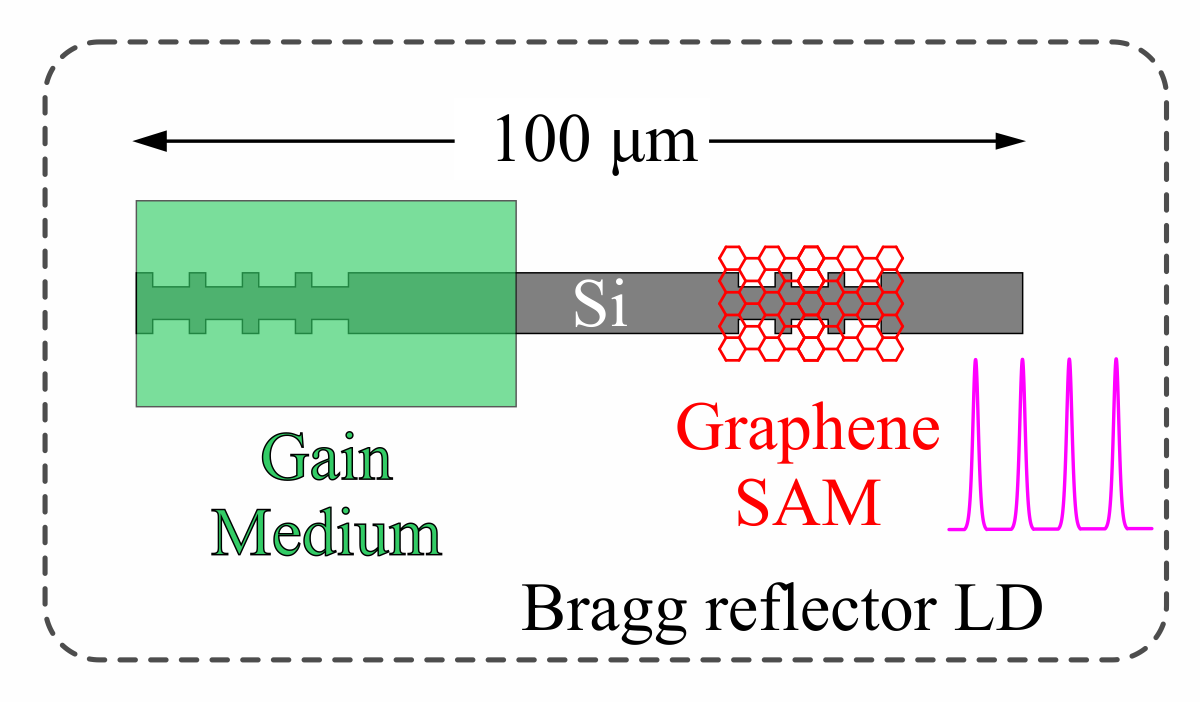
Functional on-chip graphene-enhanced light sources
Many promising functional optical devices that exploit saturable absorption in graphene have been theoretically studied and experimentally demonstrated. Early works on graphene SA demonstrated practical applications that ranged from fiber-based mode-locked and Q-switched pulsed lasers to solid-state lasers and pulse shaping. Almost all demonstrations of fiber-based mode-locked lasers confirm ultrafast pulse generation, with graphene operating as a passive self-amplitude modulator placed inside the fiber laser’s cavity and hosted between two standard fiber connectors, as shown in Fig. 1. Alternatively, graphene’s SA has been exploited in fiber-based arrangements using either the evanescent optical field interaction with a gated graphene layer or wrapping graphene around a microfiber for all-optical modulation attributed to SA.
Focusing on SA-enabled components for lasing modules, GRAINS will exploit devices borrowed from the fiber-laser world, transforming, and incorporating them into integrated photonic platforms, as conceptually illustrated in Fig. 2. In the latter figure a Si-photonic pulsed source is envisaged in a Fabry-Perot type standing-wave resonator; the gain medium is a dye-doped organic material cladding, while graphene is placed on top of the right Bragg reflector acting as the Saturable Absorber Mirror (GSAM).
References
Fig. 1: Fiber laser where a graphene flake housed between two connectors is used to passively mode-lock the fiber cavity.
(Click on image to enlarge)
Fig. 2: Concept of a Si-photonic pulsed source implemented with a Fabry-Perot type standing-wave resonator; the gain medium is a dye-doped organic material cladding, while graphene is placed on top of the right Bragg reflector.
(Click on image to enlarge)



